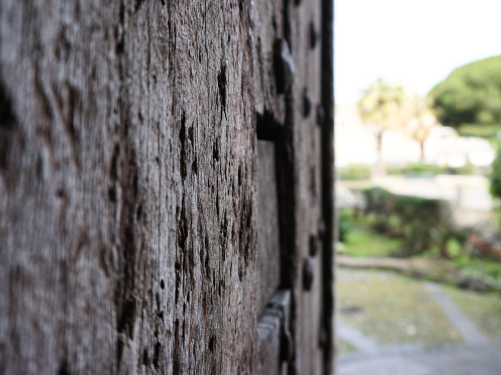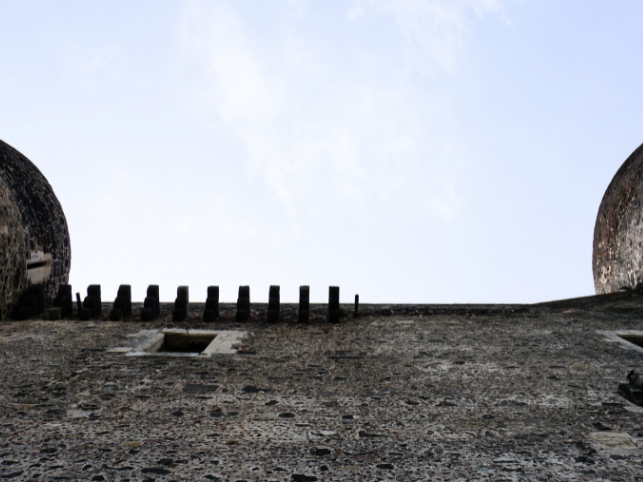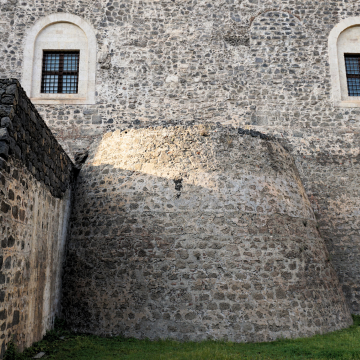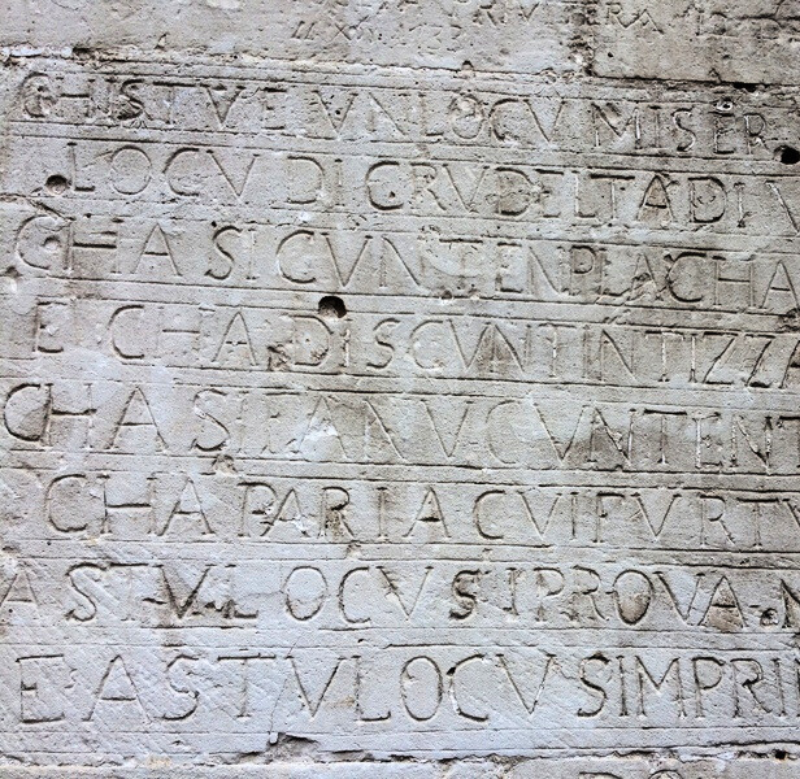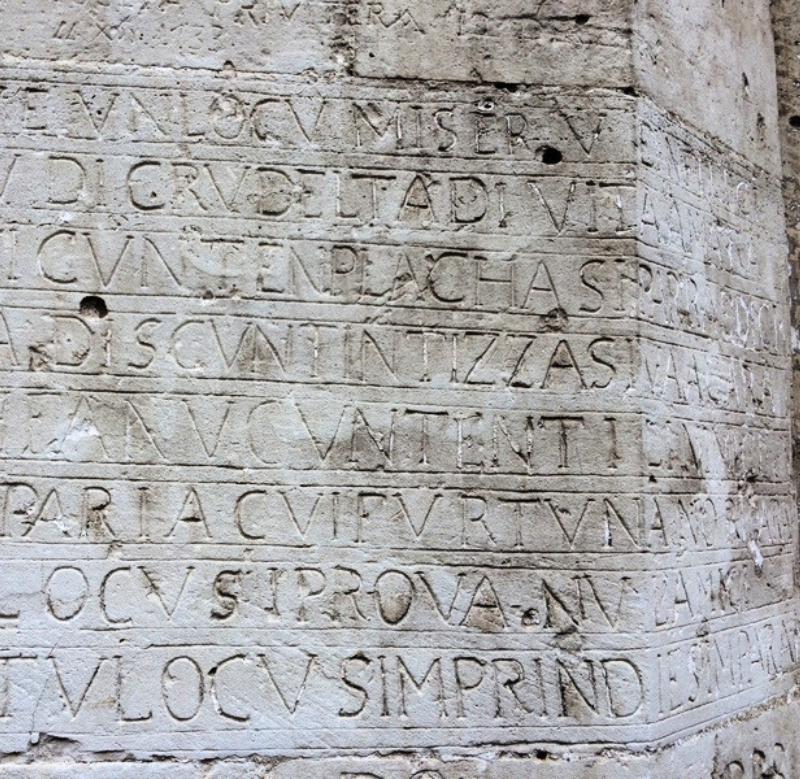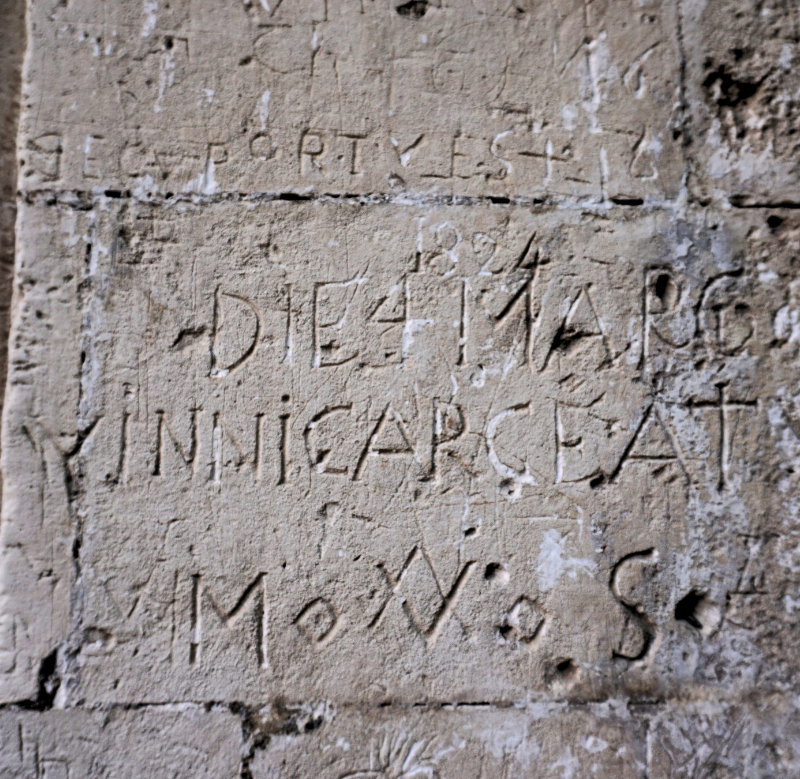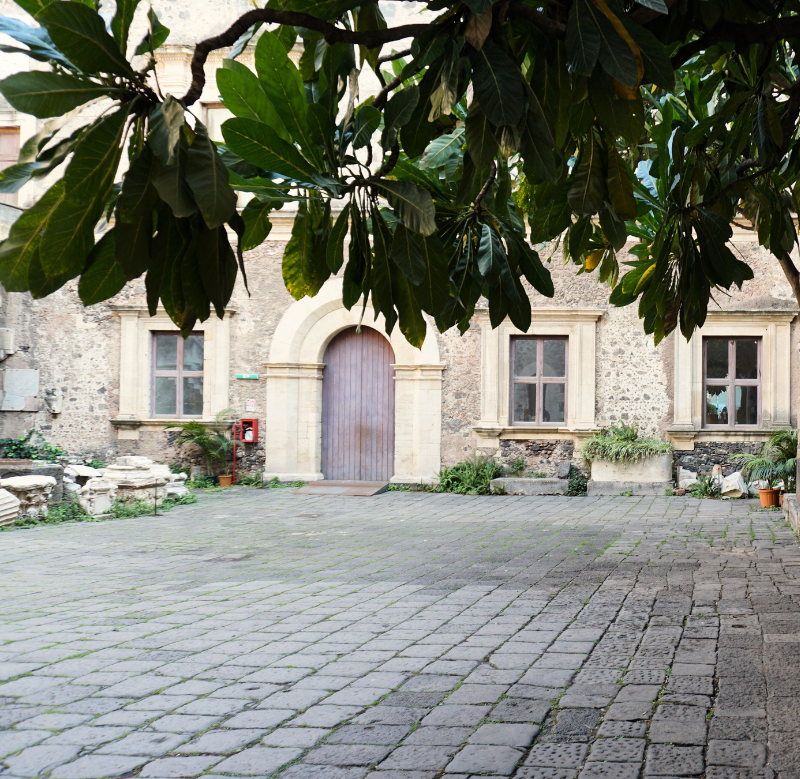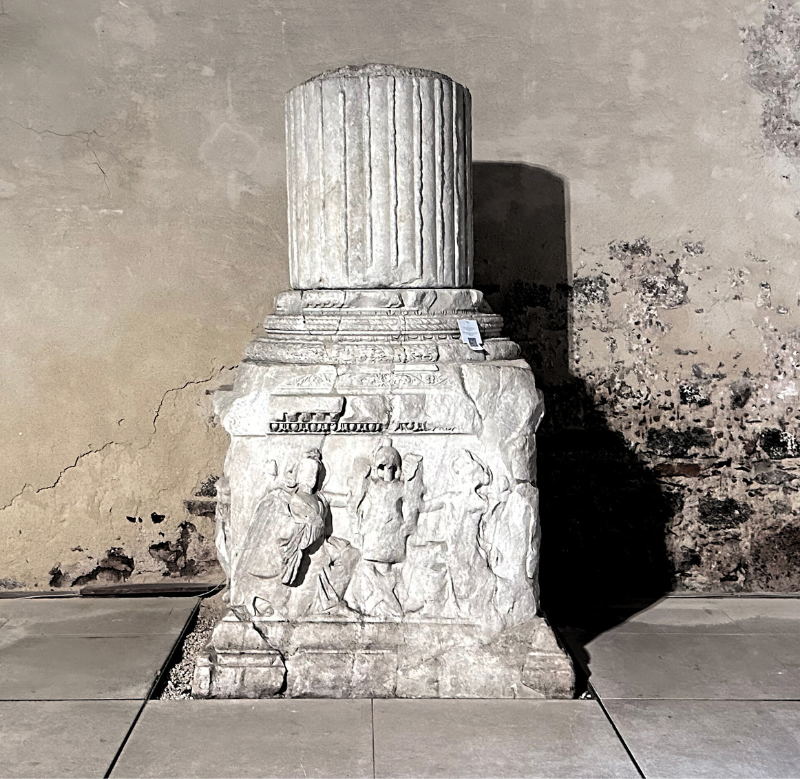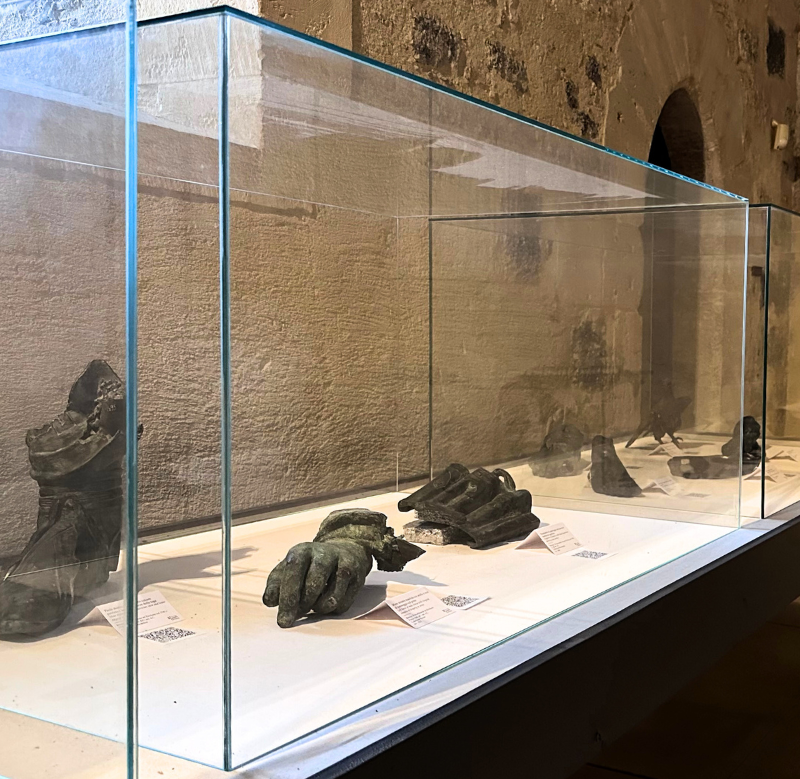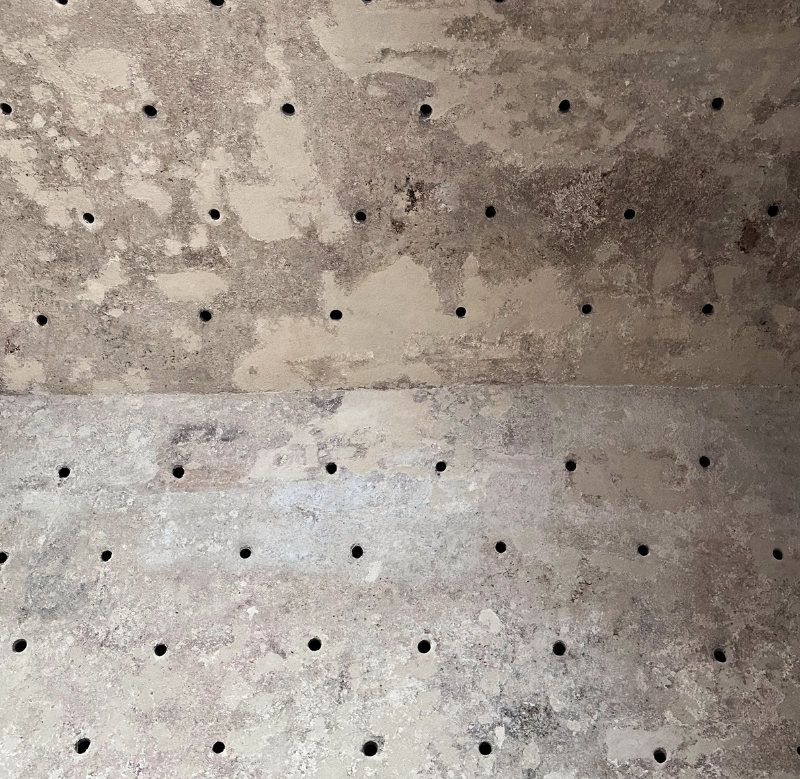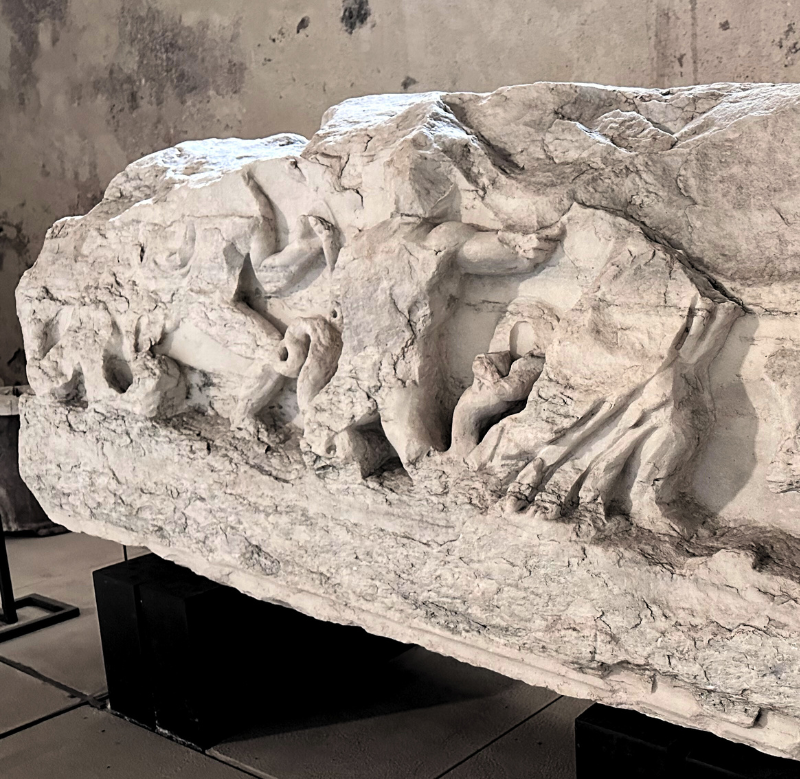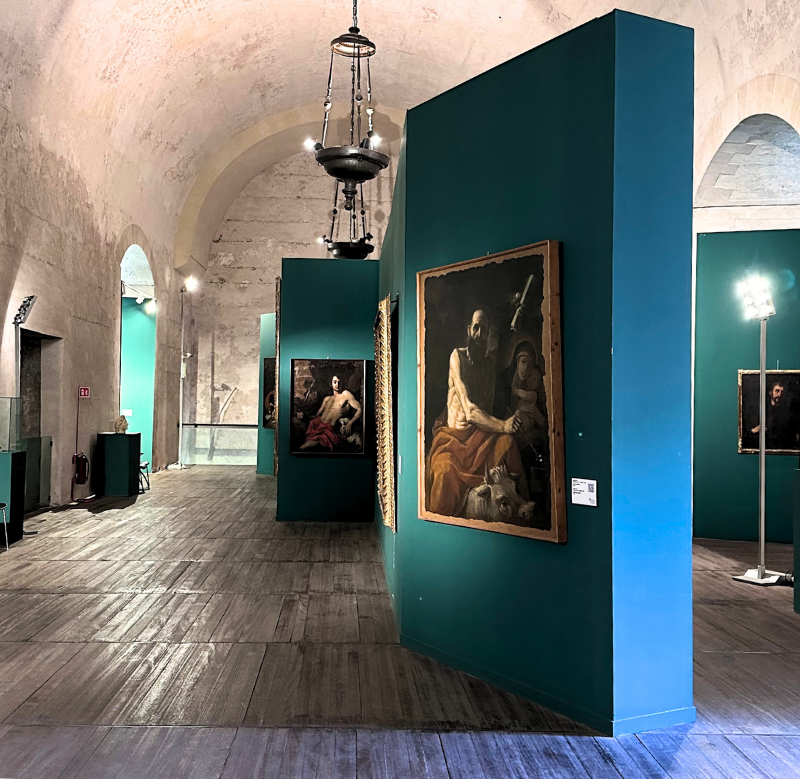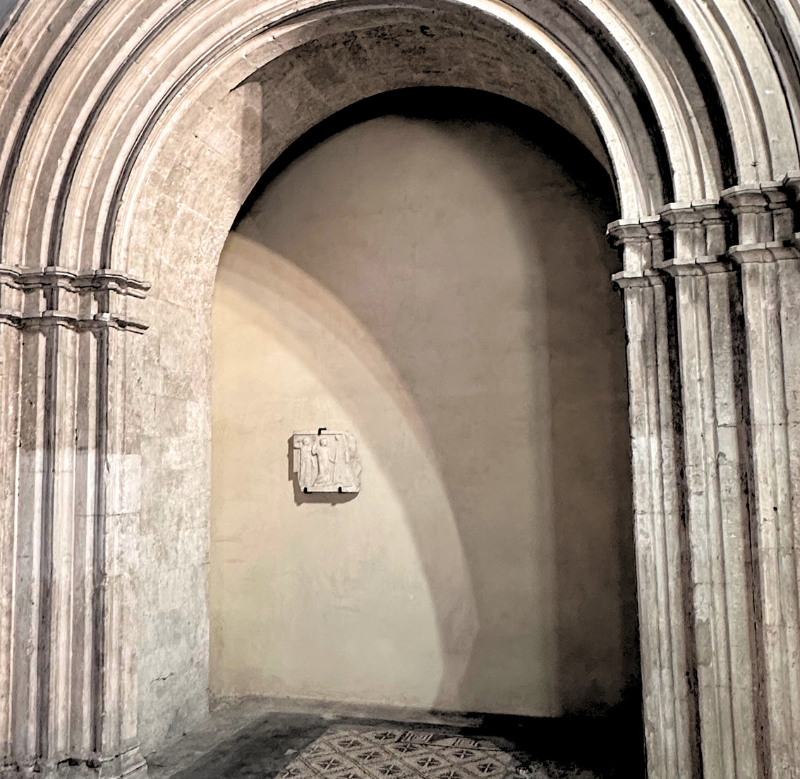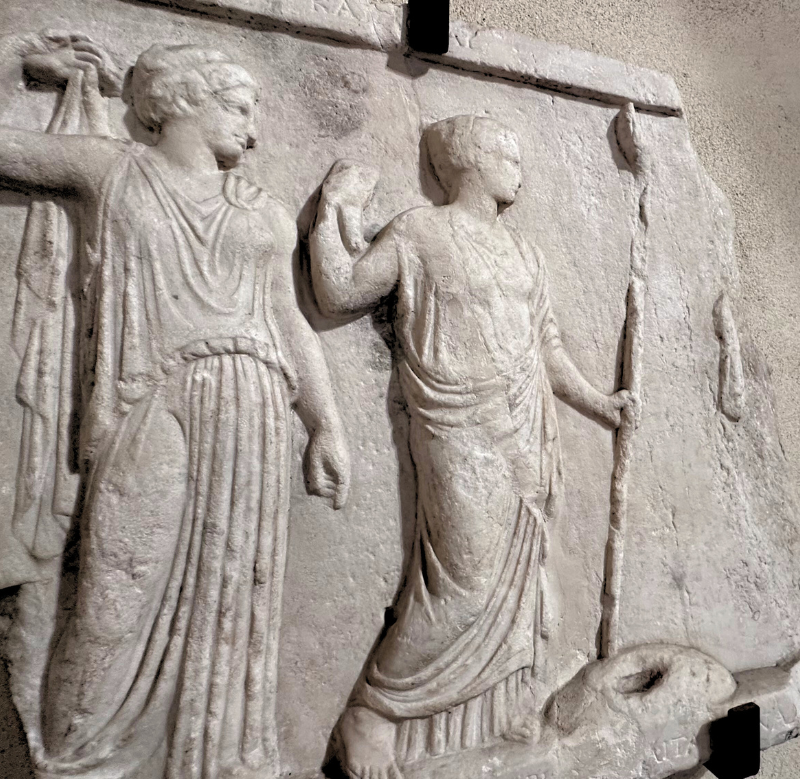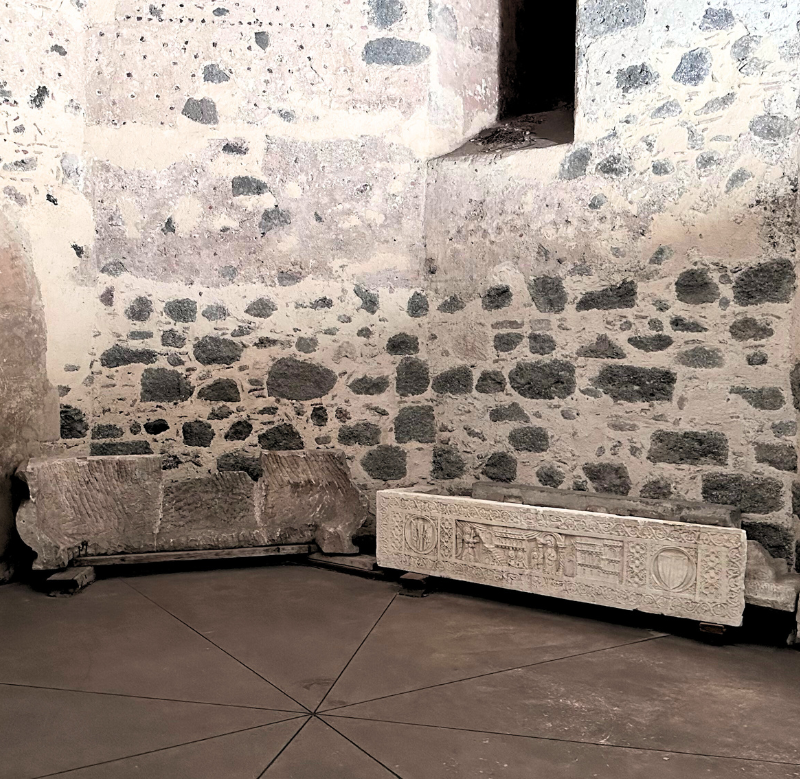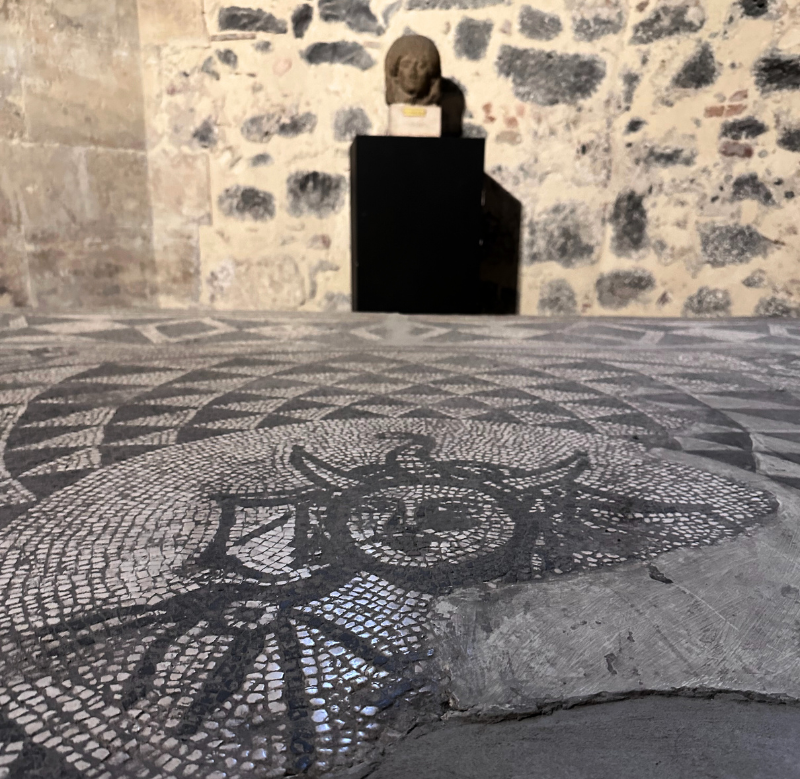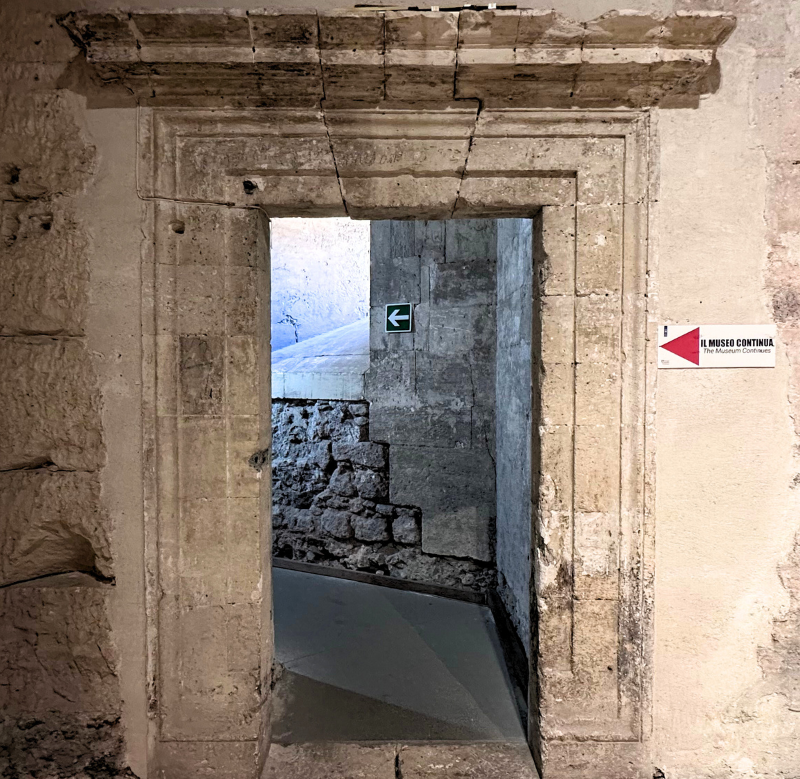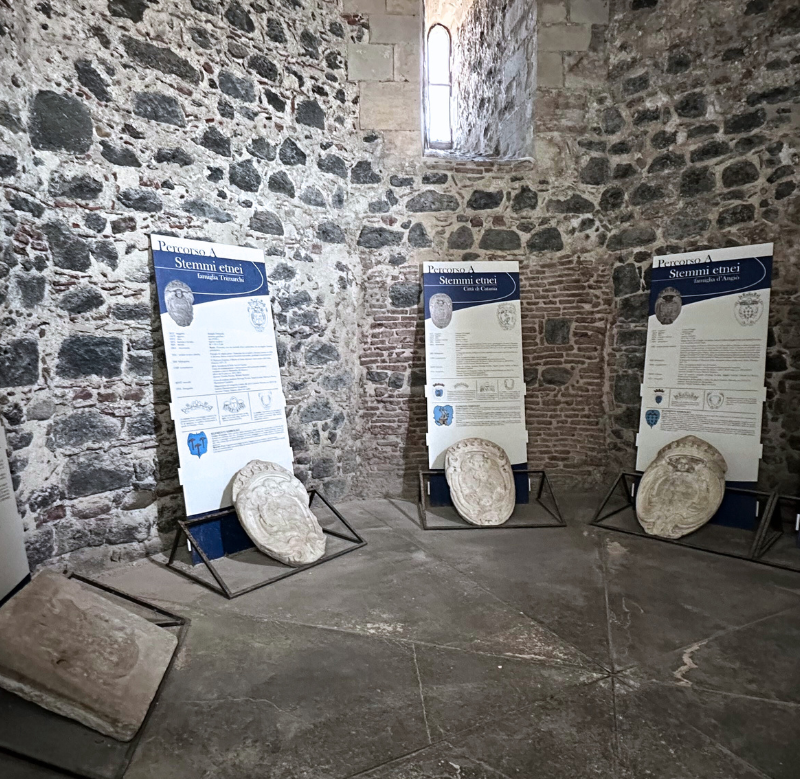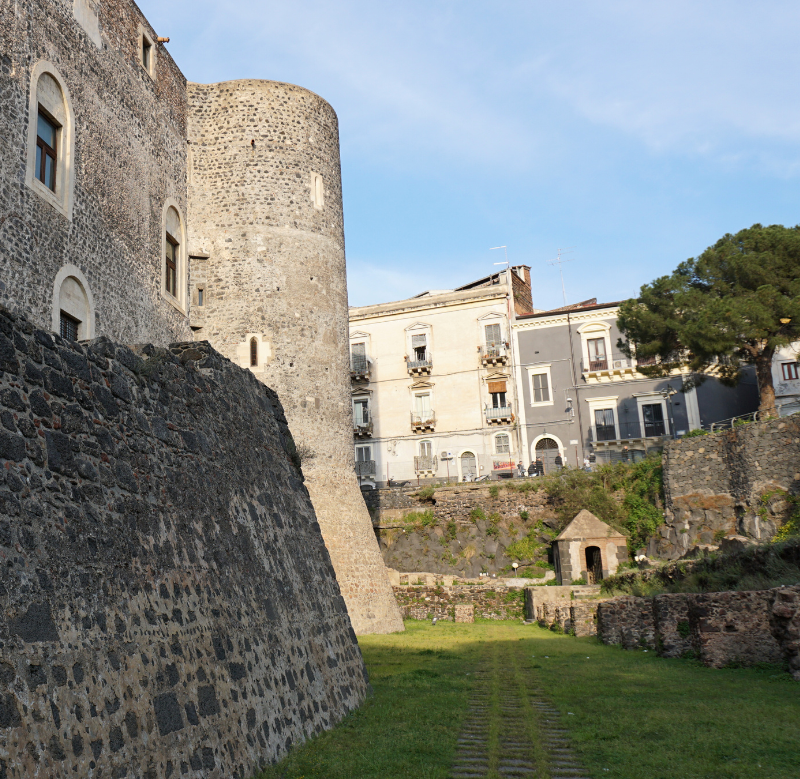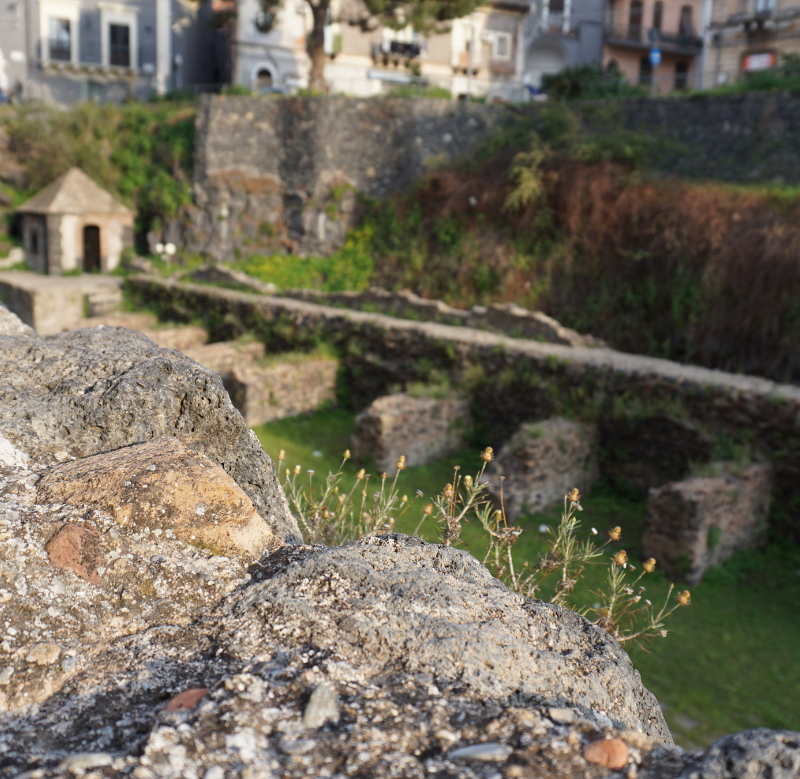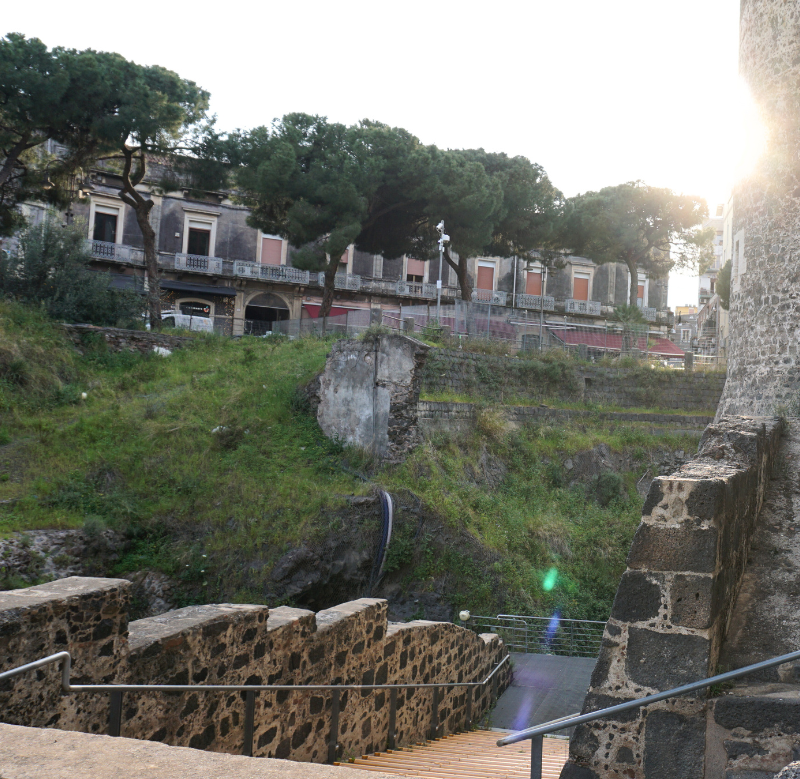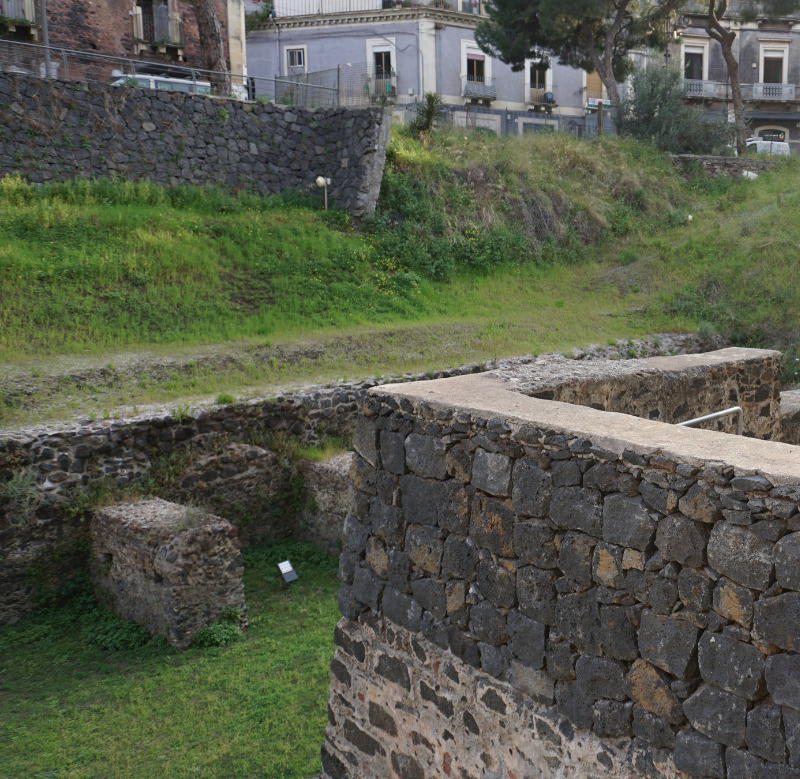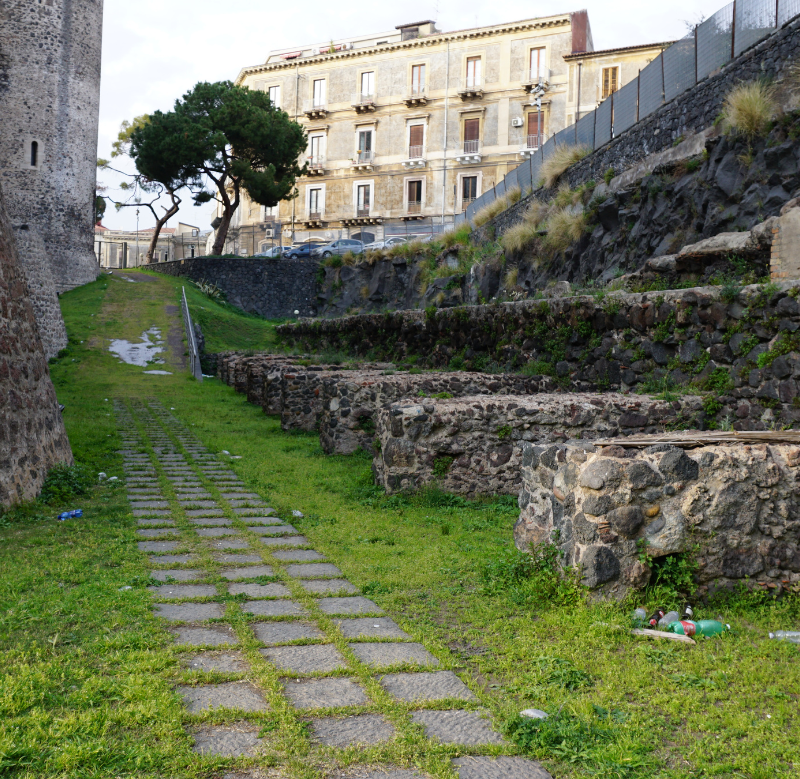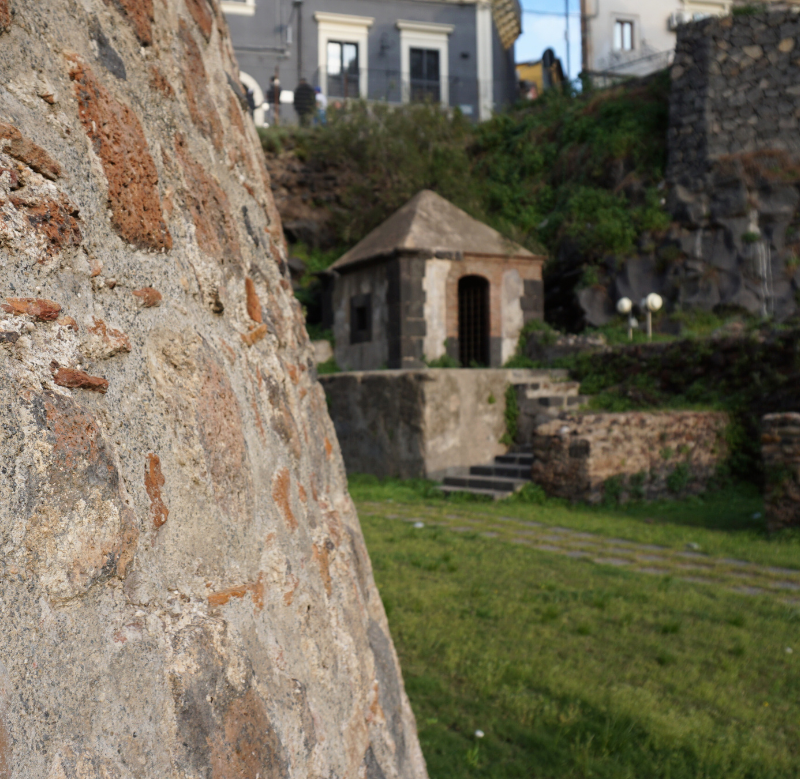THE STRUCTURE
The structure of the Castle expresses the essential aspects of Frederick's architecture: a rigorously geometric plan defined by a double perimeter square with a large internal courtyard in the centre. A perfectly regular and symmetrical structure that repeats itself, marked by four corner towers and four towers medians, two of which still exist.
The building is square in shape with 30 meters high towers at its corners, on the north and west sides two median towers with a semicircular base. It measures 63 meters on each side with walls 3 meters wide.
The simple entrance has a sculpture above it in a niche depicting an eagle grabbing a hare. Inside there is a beautiful courtyard with an external Catalan-Gothic style staircase.


